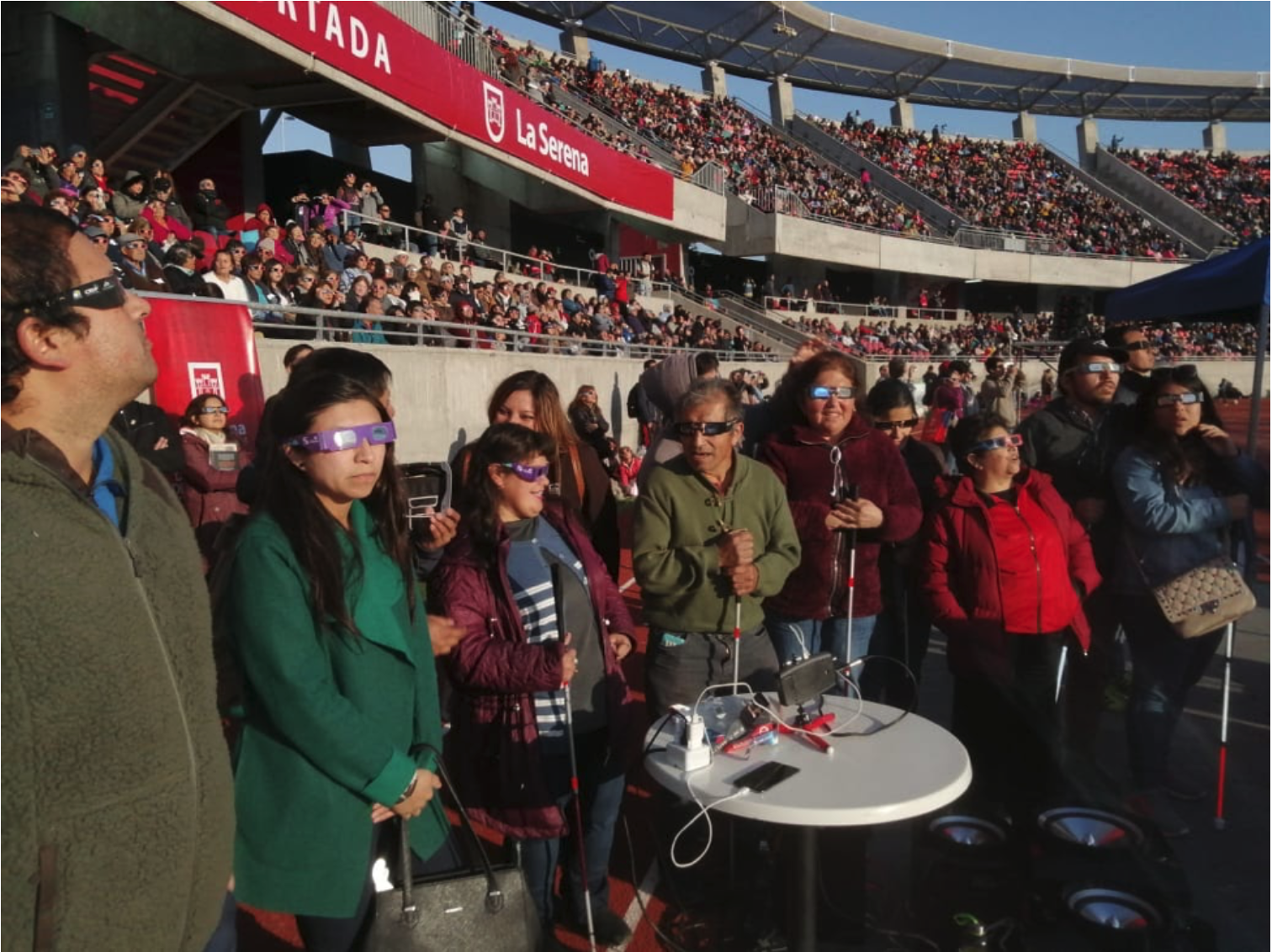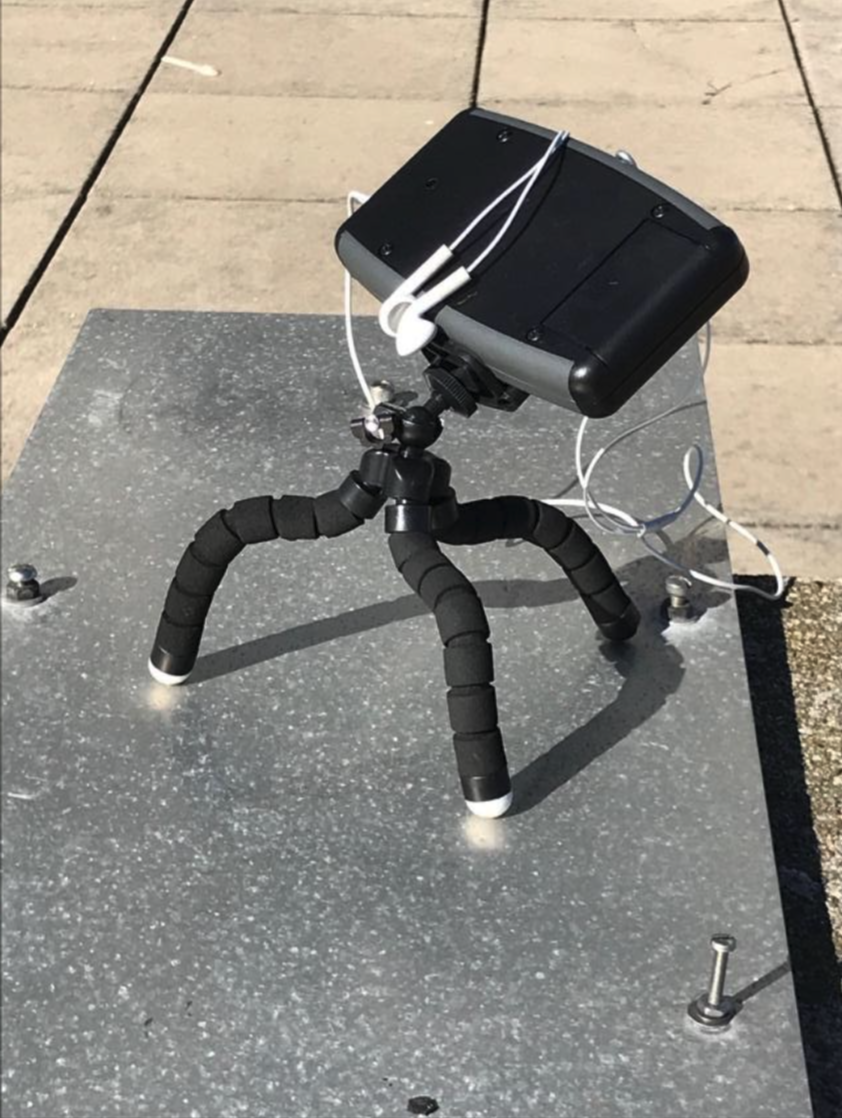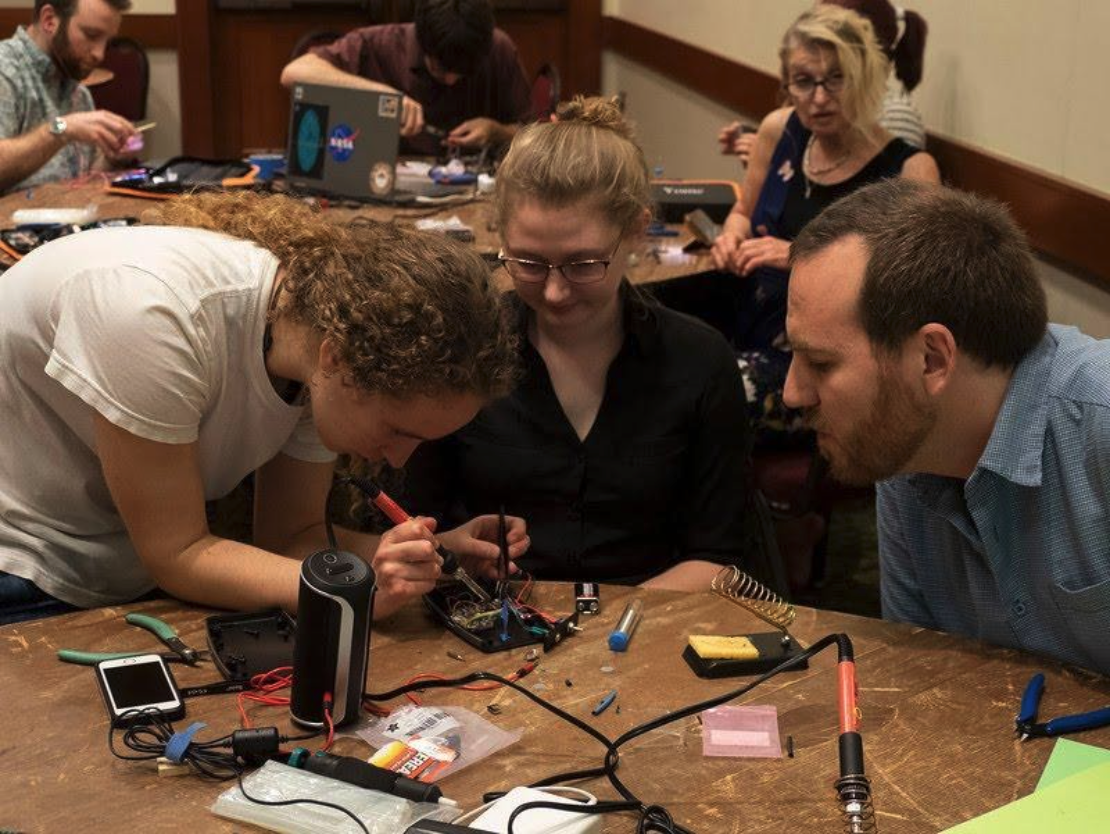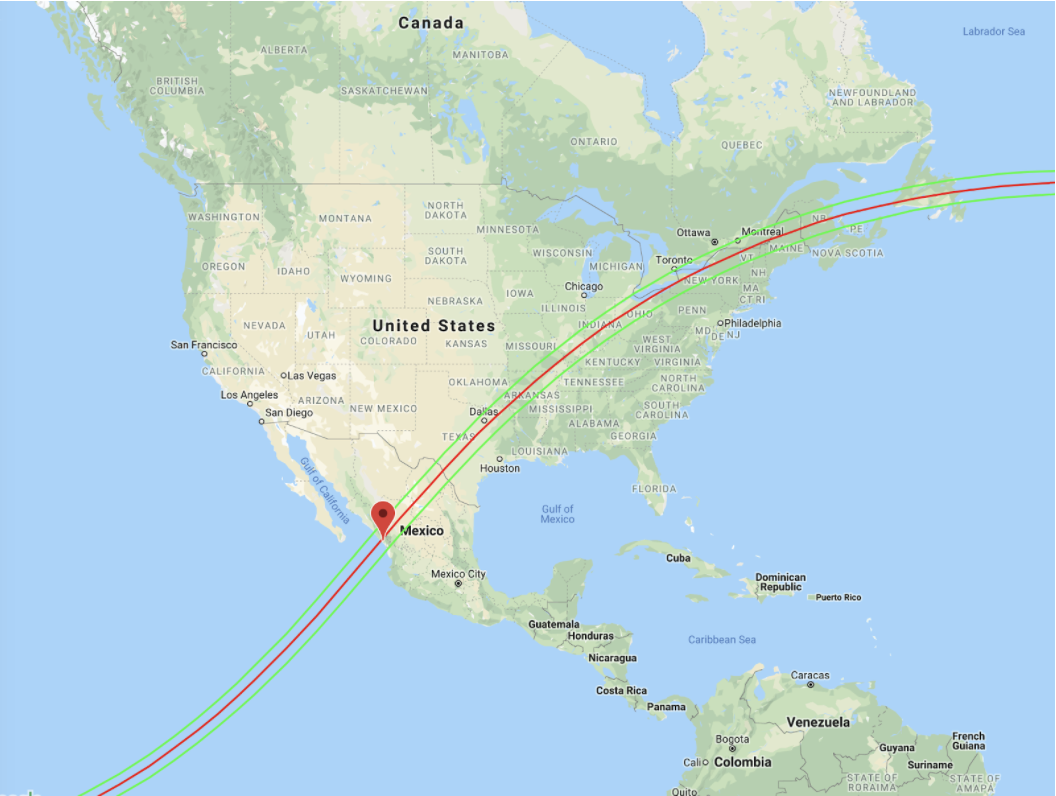Using Sonification to Observe Solar Eclipses
Allyson Bieryla Center for Astrophysics | Harvard & Smithsonian

My first solar eclipse — dubbed the Great American Solar Eclipse — was 21 August 2017. In hindsight, the media got it right; it was a ‘great’ event that sparked worldwide interest in astronomy! Hotels were sold out for months in advance, and people drove from all over the country to get in the path of totality. I didn’t really know what to expect, but I was thrilled to experience my first eclipse as an observational astronomer.
The event did not disappoint. It was several hours in duration, but it was during the two minutes and several seconds of totality that the world seemed to stop to take in the awesomeness of nature. A solar eclipse is not only visually stunning but affects the world around you. The skies get darker, the temperature gets noticeably cooler, and even animals react to these changes. The members of the crowd that I was with in Jackson Hole, Wyoming, all reacted differently — some cheered, some cried, and some sat in silence. Events like these ignite the interest of the general public and the interest of children who may someday become astronomers themselves.
Motivated to create a device that would help make events more accessible to individuals who are blind or low-vision, we developed a sonification (converting light to sound) device for the eclipse of 2017. It is called LightSound, and is designed to be low-cost (< $70) and open source1. [Watch an example demo video clip.]

LightSound is about the size of an iPhone and can connect to headphones or a speaker. It was designed to make eclipses more accessible for individuals who are blind or low-vision, but sighted people can also benefit from multi-sensory observations. The device can also connect to a computer via a USB port to collect data for future analysis and sonification. During the 2017 event, we streamed the LightSound audio and a video clip via the web so that people around the world could experience the “sound” of the eclipse. This also removed the barrier of cost for those who were unable to travel to the path of totality. We positioned two other devices in Kentucky and those devices provided audio for the events onsite and tested the data collection capabilities.
Building on the success of the North American solar eclipse, we started thinking about the South American eclipses of July 2019 and December 2020. Through a grant from the International Astronomical Union, we built and distributed 20 LightSound devices to be used during the 2019 and 2020 South American solar eclipses that passed through Chile and Argentina. These events reached tens of thousands of people. Training was provided so people knew how to use the devices properly. Many sites collected data to be analyzed and sonified at a later date2.
In preparation for the next North American total solar eclipse in April of 2024 and the annular solar eclipse in October of 2023, we developed a LightSound workshop which we debuted as a two-day workshop at the 235th AAS meeting through an Education & Professional Development Mini-Grant. The workshop focused on teaching participants how to build their own device and how to use it for public engagement or in a classroom setting. We intend to host more workshops as we start to prepare the country for these exciting upcoming solar eclipses.

As you begin to think about the next Great North American Total Solar Eclipse in 2024, we encourage you to think about how to make your eclipse events as inclusive as possible. Having a LightSound device connected to a speaker can make an entire event more accessible. Please reach out to Allyson Bieryla with any questions or to collaborate.

References:
1 LightSound website
2Symphony of Light (video)

